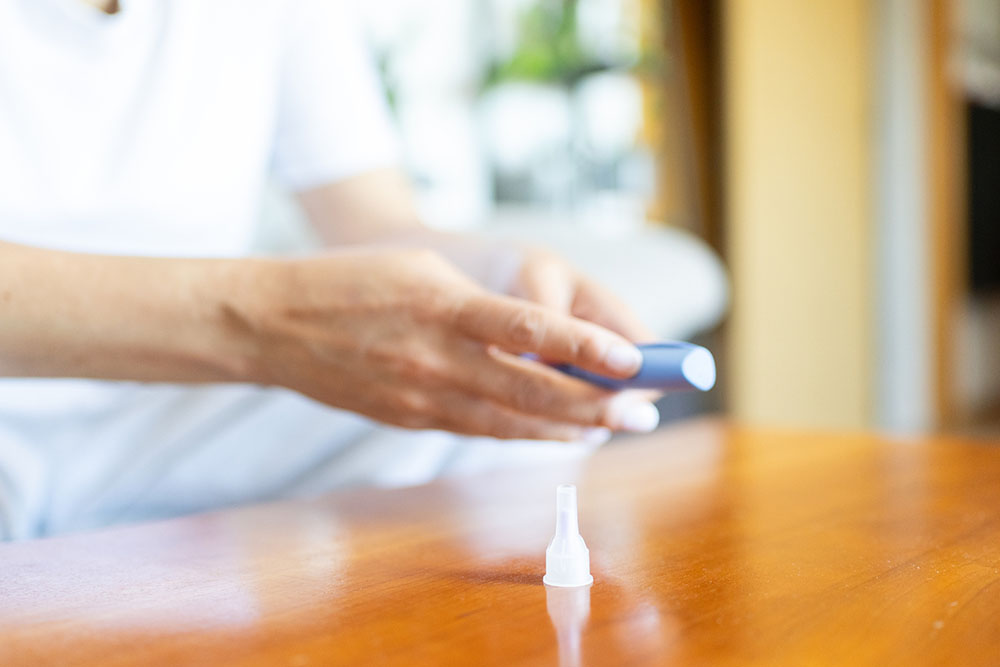By Dr. David LaMond, Medical Director, Blue Sky MD
GLP-1 receptor agonists—like semaglutide and tirzepatide—have transformed how we treat obesity and metabolic disease. They quiet the brain’s hunger signals, slow digestion, and make it easier than ever to eat less.
But when we push too hard—either through overly aggressive dosing or chronic under-eating—we can unintentionally trigger a hormonal imbalance that undermines long-term health and muscle preservation. It’s important to understand ‘more is not better’ and often the dosing as prescribed by the manufacturer is too high/aggressive.
If you are struggling with ongoing weight issues, a weight plateau or are no longer seeing success with your GLP receptor agonist like Semaglutide; decreasing the dose may be a strategy to get you back in the game. I like to refer to this as the ‘goldilocks’ analogy; too much or too little (medication and fuel) vs ‘just right’ works well to optimize your metabolism.
Let’s unpack the science behind what happens when GLP-1 therapy goes too far and how we can prevent it.

1. The Appetite–Caloric Restriction Cascade
GLP-1 medications work by reducing appetite and slowing gastric emptying. While this helps patients eat less and lose fat, chronic calorie or protein restriction can have unintended effects on key hormones:
- Lower caloric intake → Lower insulin levels.
- Lower insulin → Increased SHBG (sex hormone-binding globulin) from the liver.
- Higher SHBG → Less free testosterone available for muscle and metabolism.
Over time, this chain reaction can translate to fatigue, slower metabolism, decreased strength, and loss of lean muscle mass—even as the scale continues to drop.

2. How SHBG Affects Free Testosterone and Muscle
SHBG is a transport protein that binds tightly to testosterone, controlling how much of it remains biologically active. When SHBG rises too high, free testosterone drops, and tissues like muscle receive less anabolic stimulus. Research consistently links elevated SHBG with greater risk of low muscle mass, especially in men.
This can create a paradox: total testosterone may stay normal or even rise slightly after weight loss, but the usable free portion falls, resulting in symptoms of low testosterone—fatigue, slower recovery, and loss of muscle definition.

3. The Double-Edged Sword of Improved Metabolism
It’s important to recognize that not all hormonal changes from GLP-1 therapy are negative. Weight loss reduces aromatase activity (meaning less conversion of testosterone to estrogen) and often improves testicular and ovarian function. For many patients, this means better total testosterone levels and enhanced metabolic health.
The challenge arises when caloric restriction is too severe or protein intake too low—conditions which potentially exaggerate SHBG production and blunt these benefits.

4. Protecting Muscle and Hormones While on GLP-1 Therapy
At Blue Sky MD, we aim to balance metabolic efficiency with hormonal integrity. Here’s how to do that:
1. Dose to satiety—not starvation.
If a patient can barely eat, the dose is too high. Appetite suppression should feel like control, not avoidance.
2. Maintain a protein floor.
Aim for 1.6 grams of protein per kilogram of ideal body weight daily, divided over 3–4 meals. Protein shakes count—especially if solid food intake is limited.
3. Strength training is non-negotiable.
Resistance exercise 2–4 times per week preserves muscle and boosts insulin sensitivity.
4. Monitor hormones proactively.
Check total and free testosterone, SHBG, and fasting insulin every 3–6 months. Rising SHBG and falling free T often indicate over-restriction or under-recovery.
5. Re-feed strategically.
If SHBG climbs or symptoms emerge, increase dietary protein and calories before adjusting hormones. Recovery of free T often follows within weeks.

5. Balance is everything
GLP-1 medications are a powerful metabolic reset—but balance is everything. When patients over-restrict or over-dose, the resulting low insulin and high SHBG can reduce free testosterone, impair muscle preservation, and slow metabolism.
By keeping protein intake high, incorporating resistance training, and titrating thoughtfully, we can maximize the benefits of GLP-1 therapy without compromising hormones or long-term metabolic health.
If you have a few pounds to lose and have struggled with it for years, GLP-1 medications can help—especially when combined with our award-winning medical weight loss program. In fact, combining GLP-1 medications with a medical weight loss program can double the weight loss results.
Our patients our patients typically lose up to 30 pounds in 3 months. That’s more than double what patients see with weight loss medications like Wegovy alone.
Get started and find out if you’re qualified for GLP-1 medications by taking our free online health assessment.

About Dr. David LaMond
Dr. LaMond is the founder and Medical Director of Blue Sky MD, specializing in medical weight loss, hormone optimization, and preventive medicine. His clinical philosophy blends precision laboratory medicine with individualized nutrition and exercise programs to restore metabolic balance and vitality.

References:
- Wilding JPH et al. N Engl J Med. 2021;384:989–1002.
- Perakakis N et al. Nat Rev Endocrinol. 2021;17:155–167.
- Corona G et al. J Clin Endocrinol Metab. 2011;96(10):E1647–E1654.
- Blaha L et al. Front Endocrinol (Lausanne). 2022;13:881050.
- Thomsen M et al. Diabetes Obes Metab. 2023;25(1):240–250.
- Pasquali R et al. J Clin Endocrinol Metab. 1997;82(2):551–555.
- Gyllenhammer LE et al. Clin Endocrinol (Oxf). 2023;98(2):222–231.



